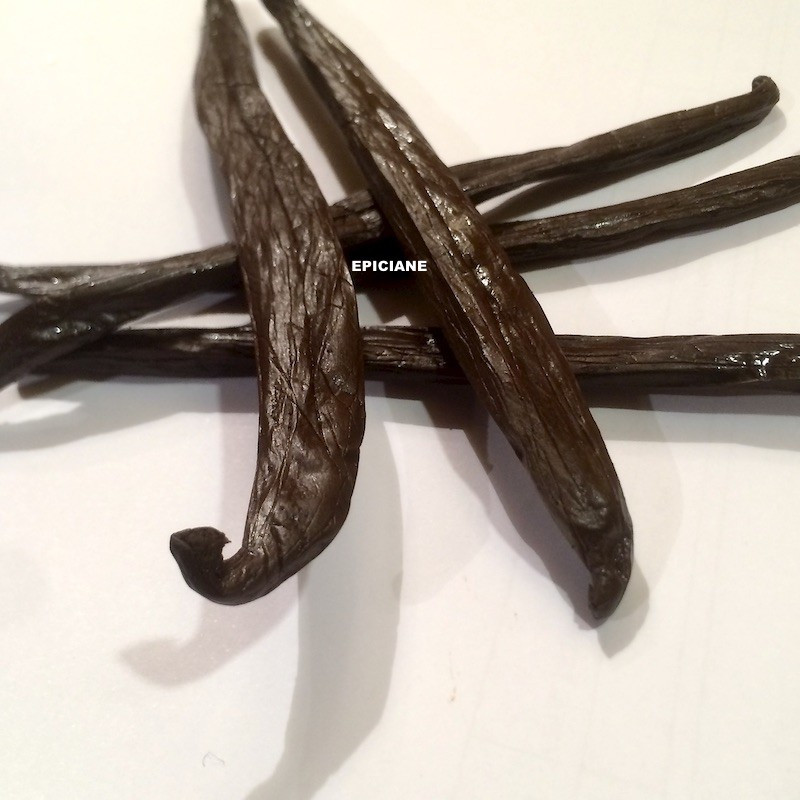
Reference: vanillebourbonE



This is the most extraordinary variety of vanilla, the enchanting Tahitensis!
With its powerful, floral, chocolatey, and slightly aniseed aroma, it will add exquisite flavor to your pastries, fruit salads, ice creams, yogurts, coffee, and tea.
 Delivery
Delivery
Mondial Relay
 Returns
Returns
See conditions
 Payments
Payments
100% secure
- Livrées sous sachet refermable -
°°°
°°°
Aspect:
Our premium Tahitian vanilla beans are 16 to 23 cm long, weighing 6 to 10 grams each, and over 1 cm wide. They are of the highest quality and sold whole.
Culinary Uses:
Vanilla, especially the Tahitian variety, is primarily used in sweet recipes to enhance chocolate, ice creams, yogurts, jams, compotes, cakes, and cookies. Its enchanting aroma also works beautifully with seafood, like scallops, prawns, or lobsters. However, for seafood, some prefer Bourbon vanilla’s less sweet profile, adding a subtle, sophisticated note to these dishes. Tahitian vanilla also pairs well with white meats, such as veal.
For optimal flavor, split the vanilla bean lengthwise and scrape out the seeds to blend into your preparation. Let it steep for as long as possible to intensify the flavor. Adding the pod itself can also enhance the infusion, and afterward, you can reuse it to scent sugar. Rinse the pod, dry it, and place it in a jar of sugar to create naturally scented vanilla sugar.
Tahitian vanilla, with its unique floral, chocolatey, and slightly aniseed aroma, is an extraordinary addition to desserts, and while pricier, it is highly efficient as a smaller amount delivers the same intensity as a full Bourbon bean.
Who am I? Cultivation?
Origin: Huahine Island, French Polynesia, near Tahiti and Bora Bora.
Scientific name: Vanilla tahitensis
Tahitian vanilla is naturally more humid than Bourbon vanilla (40-50% versus 38% max for Bourbon). The pods are wide, thick, and a beautiful matte dark brown. Tahitian vanilla contains less vanillin but has unique aniseed-like compounds, setting it apart from Bourbon.
Conservation:
Store vanilla beans in a cool, dry place (15-20°C), protected from light and air in a narrow jar or a sealed tube. You can also freeze them for extended freshness, though this is recommended only for large quantities.
Alternatively, you can place the beans in a jar with a bit of alcohol, dipping just the ends. While this method slightly flavors the beans with alcohol, it prevents them from drying out.
A Little History:
The Aztecs, and before them the Maya, used vanilla to flavor a thick cacao-based drink. They sourced vanilla from coastal regions near today’s Veracruz, Mexico.
The Spanish discovered vanilla in the early 16th century upon arriving in the Americas, with Columbus introducing it to Europe in 1518. International trade, however, began in the 17th century when Queen Elizabeth I became fond of vanilla.
Mexico held the vanilla monopoly for two centuries until the mid-19th century when Edmond Albius, a young slave on Île Bourbon, developed the manual pollination method still used today. Thanks to Albius, vanilla is now produced worldwide.
Later, Réunion planters brought vanilla to Madagascar, where it spread across the island’s humid, warm regions. Despite competition from regions like India and Indonesia, Madagascar still produces 60% of the world’s vanilla.
Data sheet
 Olivier N.
Olivier N.
Pas encore testé

 Olivier N.
Olivier N.
Pas encore testé

Reference: vanillebourbonE
Reference: vanillebourbonE
Reference: OF35029
Reference: Papou

This is the most extraordinary variety of vanilla, the enchanting Tahitensis!
With its powerful, floral, chocolatey, and slightly aniseed aroma, it will add exquisite flavor to your pastries, fruit salads, ice creams, yogurts, coffee, and tea.